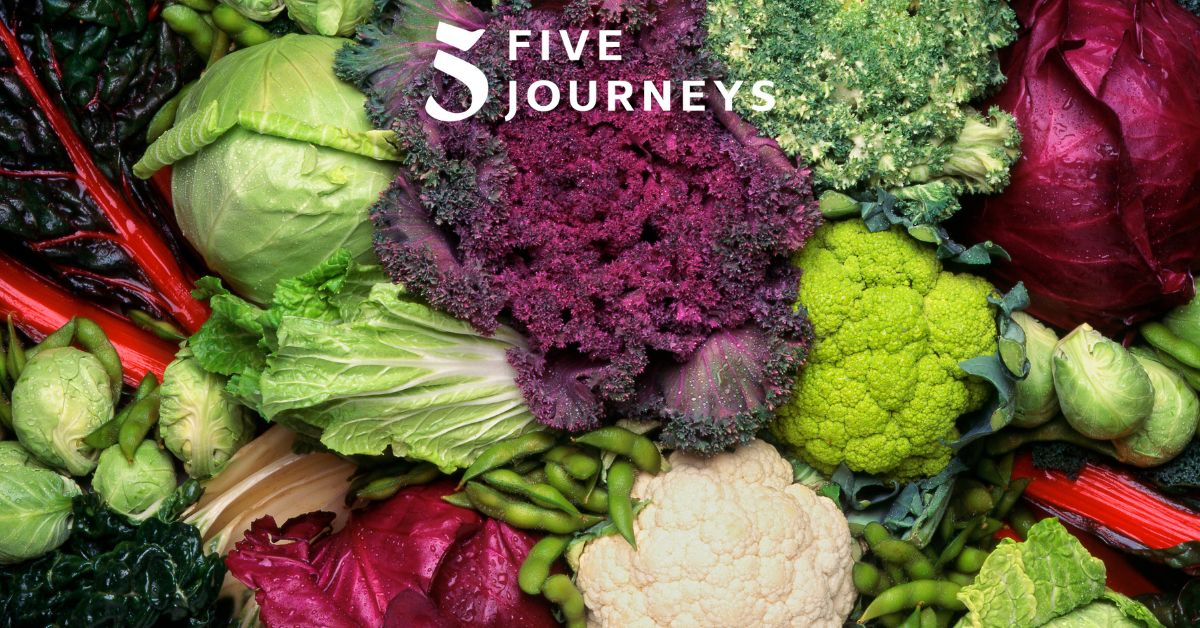
Home / Uncategorized / Cruciferous Vegetables And Inflammation

What if the key to feeling your best, from the inside out, was already in your kitchen? Inflammation, often a quiet force behind many health concerns, can influence how vibrant we feel each day. Fortunately, some of nature’s most humble foods are now recognized for their remarkable ability to help your body maintain a balanced inflammatory response. Let’s look closer at why cruciferous vegetables and inflammation are increasingly linked, and how these everyday green giants might become your new favorite anti-inflammatory food.
Cruciferous vegetables belong to the Brassica family, named for their “cross-shaped” flowers. These nutritional powerhouses are often described as superfoods due to their rich content of vitamins, minerals, fiber, and unique plant compounds. They are a diverse group, offering a variety of flavors and textures to incorporate into your meals.
Common examples of cruciferous vegetables include:
Research shows a strong connection between cruciferous vegetables and inflammation, suggesting these greens can significantly help your body maintain a healthy inflammatory response. These vegetables contain special plant compounds that become active when you chop or chew them, or even through the work of your gut bacteria once eaten.
Here’s how these amazing compounds help keep inflammation in check:
Think of it like this: these vegetables flip a “master switch” in your cells. This switch, called Nrf2, turns on your body’s own natural defenses against harm, like antioxidants. By activating this switch, cruciferous vegetables help shield your cells and calm down any signals of inflammation.
The compounds in these vegetables also gently guide your body’s inflammatory responses. They can help quiet down signals that might cause too much inflammation, bringing things back to a more balanced state. They may even help reduce levels of substances that promote inflammation.
Beyond directly influencing inflammation, cruciferous vegetables are packed with antioxidants. These helpful substances protect your cells from damage caused by unstable molecules called free radicals, which often trigger inflammation. By fighting this cellular stress, these vegetables help create a calmer environment inside your body.
The compounds in these vegetables can play a role in supporting a balanced immune system. A well-tuned immune system is important for preventing inflammation from getting out of control or lasting too long.
To identify potential environmental contributors to inflammation, tests are available that evaluate the presence of harmful mycotoxins (toxins produced by molds).
Studies have consistently shown that eating more cruciferous vegetables is often linked to lower levels of inflammation indicators, highlighting their role in the dietary management of allergies and overall well-being. This suggests that the more you include these greens in your diet, the more you may experience reduced inflammation. This truly makes them a top anti-inflammatory food choice for your meals.
These findings highlight why making these vegetables a regular part of your meals is a smart choice for overall well-being. A simple tip: lightly steaming them can help keep their beneficial compounds active!
While there’s no single universally agreed-upon “magic number,” dietary guidelines and research focusing on cruciferous vegetables and inflammation suggest regular consumption to gain their benefits.
Here are general recommendations for incorporating cruciferous vegetables into your daily intake:
Focus on including a range of different cruciferous vegetables in your diet throughout the week. Each type offers a slightly different spectrum of beneficial compounds.
Many health experts suggest aiming for at least 1 to 2 servings of cruciferous vegetables per day. A serving might be about ½ cup cooked or 1 cup raw.
Some individuals, particularly those with certain thyroid conditions or digestive sensitivities, may need to introduce cruciferous vegetables gradually or prepare them in specific ways (e.g., cooking them) to minimize discomfort. However, for most people, they are well-tolerated.
Lightly steaming, sautéing, or roasting these vegetables can help preserve their beneficial compounds and make them easier to digest. Chewing them well also helps activate the enzymes that convert glucosinolates into their active forms.
Adding these superfoods to your meals can be a delicious and proactive step toward supporting your body’s natural inflammatory response and enhancing your overall health.
The journey to managing inflammation and promoting overall well-being often starts with what we put on our plates. Cruciferous vegetables, along with matcha, stand out as powerful allies in this endeavor, offering a wealth of anti-inflammatory compounds and beneficial nutrients. By consistently including these superfoods in your diet, you can support your body’s natural balance and embrace a more vibrant, healthy life. Making these simple, nutritious choices daily is a wonderful way to empower your health from within.
Jiang, Y., Wu, S.-H., Shu, X.-O., Xiang, Y.-B., Ji, B.-T., Milne, G. L., Cai, Q., Zhang, X., Gao, Y.-T., Zheng, W., & Yang, G. (2014). Cruciferous vegetable intake is inversely correlated with circulating levels of proinflammatory markers in women. Journal of the Academy of Nutrition and Dietetics, 114(5), 700-707.e2. https://doi.org/10.1016/j.jand.2013.12.019
Tilg, H. (2015). Cruciferous vegetables: prototypic anti-inflammatory food components. Clinical Phytoscience, 1, 10. https://doi.org/10.1186/s40816-015-0011-2
Get free shipping.
Free Shipping
5% Discount


At home.
Blood and Urine
$179 – $439
Depending on insurance coverage.


This is a comprehensive stool test that relies on quantitative polymerase chain
reaction (qPCR) technology to detect parasites, bacteria, H. pylori, fungi, and more by targeting the specific DNA of the organisms tested. Click here for more information.
At home.
Stool
$399
Depending on insurance coverage.


At home.
Urine
$129
Depending on insurance coverage.


At home.
Swab
$299
Depending on insurance coverage.


At home or in lab.
Blood
$999
Depending on insurance coverage.


At home.
Blood, Urine, or Ticks
may have a $200 copay
Covered by most insurance.


At home.
Urine
$300
Depending on insurance coverage.


At home.
Urine
$199
Depending on insurance coverage.


This test evaluates the genetic profile for multiple health indicators. Click here for more information.
At home
Blood Spot


At Home
Urine
$699
Fully covered by Medicare. Repeat test prices $249


$85-$225 depending on insurance coverage.




This company can test for lyme, babesia, bartonella and additional tick-borne illnesses. Click here for more information.
Blood
around $1600 (depends on panel selected)


This test is designed to look at food sensitivities (IgG immune responses). It is available in both a 99 or 184 panel. Click here for more information.
Blood
$129-238


No insurance coverage


Blood




This test evaluates the gut function and indicates microbiome balance, overgrowth, infection, inflammation, parasites and digestive efficacy. Click here for more information.
$179-$439 depending on insurance coverage.


This test evaluates many measures including micronutrients, antioxidants, minerals, detox, overview of gut function, omegas and toxic exposure. Click here for more information.
At home.
Urine
$150 – $329


Blood work for blood count, urinalysis and vitamin levels.
At any Quest Diagnostics Location
Blood
You often have to fast for these tests-please check your providers notes.




$310